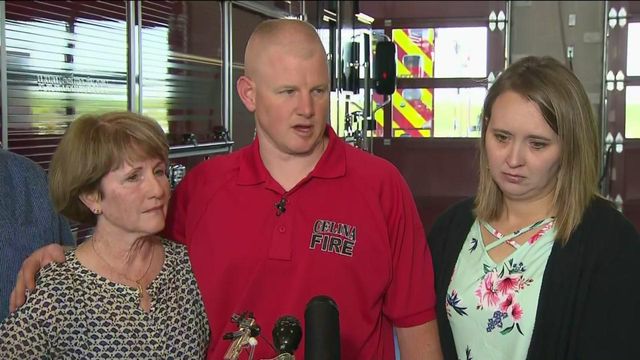Even Sully impressed by Southwest's emergency landing
The levelheaded response of Tammie Jo Shults, the captain of a Southwest Airlines flight that suffered a deadly midair engine explosion on Tuesday, reminded some of the so-called Miracle on the Hudson in 2009, when an engine failure forced a plane flying over New York City to make an emergency landing in the Hudson River.
Posted — UpdatedThe levelheaded response of Tammie Jo Shults, the captain of a Southwest Airlines flight that suffered a deadly midair engine explosion on Tuesday, reminded some of the so-called Miracle on the Hudson in 2009, when an engine failure forced a plane flying over New York City to make an emergency landing in the Hudson River.
One of the people who felt a twinge of recognition was Chesley B. Sullenberger III, the pilot who executed that water landing off Midtown Manhattan after a dual engine failure brought his plane plummeting toward the earth.
“Certainly there are some similarities,” Sullenberger, whose story was made into a 2016 film, “Sully,” said in an interview on Wednesday. He said he was “impressed” that Shults and her crew “seem to have done a really good job and remained calm, communicated well, had good teamwork.”
Both Sullenberger, 67, and Shults, 56, are former fighter pilots with many years in commercial aviation. And both were given just moments to respond to an unexpected midair crisis that put more than a hundred lives on the line.
“It’s quite a challenge,” he said. “They would have been very busy all the way down.”
All 155 people on Sullenberger’s plane, US Airways Flight 1549, survived that day, Jan. 15, 2009. One person, Jennifer Riordan, was killed on Flight 1380 on Tuesday, when shrapnel from the explosion burst through a window, causing a depressurization that sucked her partially outside the plane.
The other 148 people on Flight 1380, which was traveling from New York City to Dallas, survived. Sullenberger attributed the plane’s safe arrival at Philadelphia International Airport not just to the skill of Shults but also to every crew member, including the flight attendants who desperately tried to save Riordan’s life.
“These kinds of events are life-changing for everybody on the airplane,” Sullenberger said. “They divide one’s life into before and after.”
Pilots use a flight simulator to train for the possibility of midair engine failure, but the number who experience and survive one amounts to “a small club,” he said.
“It is possible now to go through an entire airline career and never experience an in-flight engine failure,” he said.
And the kind of cascading crisis faced by Flight 1380 on Tuesday — an engine explosion that exposes the cabin to the open air, causes a decompression and fatally pulls a passenger partially outside the plane — is even more rare and difficult to handle.
“That’s one of the hard things about being a pilot these days when it is so ultra safe,” he said. “How do you remain vigilant enough, how do you have your skills and your own paradigm for how to solve any problem in an airplane even if it is one there is no checklist for?”
Once a damaged plane has landed safely, a whole other journey begins for everyone who was on board, Sullenberger said. Interviews with officials from the National Transportation Safety Board. Media attention. Sleepless nights. Rapid heartbeat. Post-traumatic stress.
“I know this process well,” he said. “Just because they finished this emergency flight successfully, they aren’t done with this flight yet.”
Related Topics
Copyright 2024 New York Times News Service. All rights reserved.






